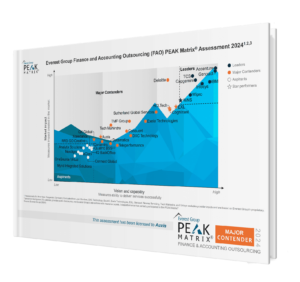Few activities inspire more dread in Finance & Accounting staff than the month-end close process. Rife with time-consuming, tedious tasks like tracking down data from other departments, ensuring every transaction is recorded, and catching and correcting errors, F&A teams typically face long hours and overtime.
Pressure to close the books quickly so executives can make informed business decisions – while maintaining accuracy and compliance – only increases the stress.
Ideally, the month-end close process should take 3-5 days. But 25% of F&A teams say it consumes 10 or more, according to APQC (American Productivity & Quality Center) benchmarking – and dragging it out over 30 days is not rare.
Stuck in “the way things have always been done,” most organizations don’t know where to start to build improvements. Let’s examine 6 month-end close best practices that can scrub days off your month-end close process – letting your team focus on what matters most: delivering strategic insights to your business.
Smart tips for optimizing your month-end close processing
1. Avoid last-minute scrambles with a cloud task management tool.
Month-end close is often managed informally, with F&A leaders assuming their teams know what they need to accomplish. But with no mechanism for tracking status, busy accounting staff rarely start financial close activities until the end of the month – and struggle to close on time as they scramble to resolve inevitable issues.
Implementing an automated close task management solution like Adra by Trintech adds visibility and accountability – creating an in-depth checklist of all steps in the month-end close process. It details when each task needs to be completed, in what order, where dependencies are, and who is responsible, so everyone is aware of how their work fits into the bigger picture.
The Adra® Task Manager tool sends automated reminders to staff responsible for certain tasks, ensuring activities that can be done ahead of time are prioritized. Continuous automated monitoring also keeps accounting managers informed of to-do list progress, providing a dashboard that enables them to track activities by person or process and spotlights potential bottlenecks.
2. Prioritize accounts that require monthly vs. quarterly reconciliation.
Substantiating balances and adding supporting documents rank among the most time-consuming tasks in the month-end close process. But while account reconciliation is essential to spotting errors, some accounts don’t experience enough movement to justify the monthly investment.
An automated reconciliation solution like Adra ® Balancer adds speed and control – helping you prioritize your balance sheet based on account movement, importance, risk, materiality, and more.
You can easily track which accounts require monthly vs. quarterly reconciliations, ensuring your team focuses on the right activities. The tool further drives productivity with automated reconciliation of low-risk accounts based on predefined rules.
3. Take advantage of your ERP automation plus an automated matching solution.
Top-rated ERP systems like NetSuite offer a wealth of opportunities to accelerate the month-end close process by automating routine, manual tasks – reducing reliance on cumbersome spreadsheets and improving information flow enterprise-wide. Also, a whopping 88% of spreadsheets have errors!
Automating mundane month-end close processes minimizes manual data entry, reducing inefficiency and errors. It also helps maintain regulatory compliance and reduces the risk of financial fraud through automated approval workflows with embedded controls.
For instance, NetSuite uses rules-based analysis and machine learning to automate bank reconciliation, using real-time data to compare bank transactions with internal records. It automatically creates journal entries for missing transactions and flags potential errors for investigation.
NetSuite also offers opportunities to automate fixed asset management, repeatable allocations, reversing journal entries, financial reporting, scheduling reports, and more.
Adra ® Matcher by Trintech can be another time-saving solution, providing automated, line-by-line multi-transaction matching for organizations that lack similar functionality in their ERP.
4. Use RPA and OCR technology to speed invoice processing.
Automating your AP process with the market-leading UiPath Robotic Process Automation (RPA) platform can significantly speed up the flow of invoices into your organization. It ensures all transactions are accounted for without human intervention – even up to the last minute. F&A teams will know what is happening at any moment in time and can use real-time information to close faster.
RPA also ensures outstanding liabilities are no longer a guessing game, providing visibility across all invoices so teams can see what has been received, what needs to be approved, and where invoices are in the process.
Centralizing invoice processing with RPA further mitigates the problem of lost invoices and the need to hunt for them. With invoice data readily available, F&A teams have more time to focus on higher-value close tasks like accruals and account analysis.
Finance Benchmarks: Prophecy or Pretense?

Optical character recognition (OCR) should be a key feature of your AP RPA solution. OCR technology automatically extracts text from images and documents – ensuring software robots can read invoice documents of any difficulty, pull desired information, and take correct actions without human assistance.
5. Attach approval backups to your ERP.
Approving journal entries during the month-end close process typically requires a Controller or Accounting Manager to validate data by viewing a calculation file or backup of what’s booked in the system.
However, managers in other departments rarely share the F&A team’s sense of urgency or attention to detail – meaning requested documentation frequently appears last-minute, requires clarification, or is incomplete. Toggling between different folders to view information also wastes valuable time.
Attaching approval backups to journal entries in your ERP system when they are created is a simple way to add efficiency to your financial close, enabling analysis and approval without delay.
6. Measure performance.
Close activities are constantly changing. New compliance requirements, acquisitions, key staff turnover, changes in accounting principles, and more combine to challenge the effectiveness of your month-end close process.
Knowing and tracking key KPIs adds resiliency to your close – delivering critical insights that help you benchmark results and adjust execution to ensure optimal performance. Important metrics often include the number of days to close, number of errors, auditor adjustments, and overtime hours.
The bottom line: measurements must be meaningful, consistent, and have stakeholder buy-in to help you improve accuracy and achieve results faster.
To get more detailed examples of KPIs you should track in your finance operations, download our guide on Finance Benchmarks and KPIs.
Enable faster and smarter decision-making with Month-End Close best practices
Month-end close processes are critical to an organization’s financial health and performance. But too often, they are paper-clogged and poorly documented, with laborious or non-existent workflows.
Implementing these best practices optimizes your financial close with effective and time-saving efficiencies – putting accurate financial information into leadership’s hands sooner for timely analysis and smarter decision-making.
Auxis brings a range of proven finance automation tools to provide our clients with the highest levels of productivity, efficiencies and controls. Click here to talk with our finance transformation experts.





